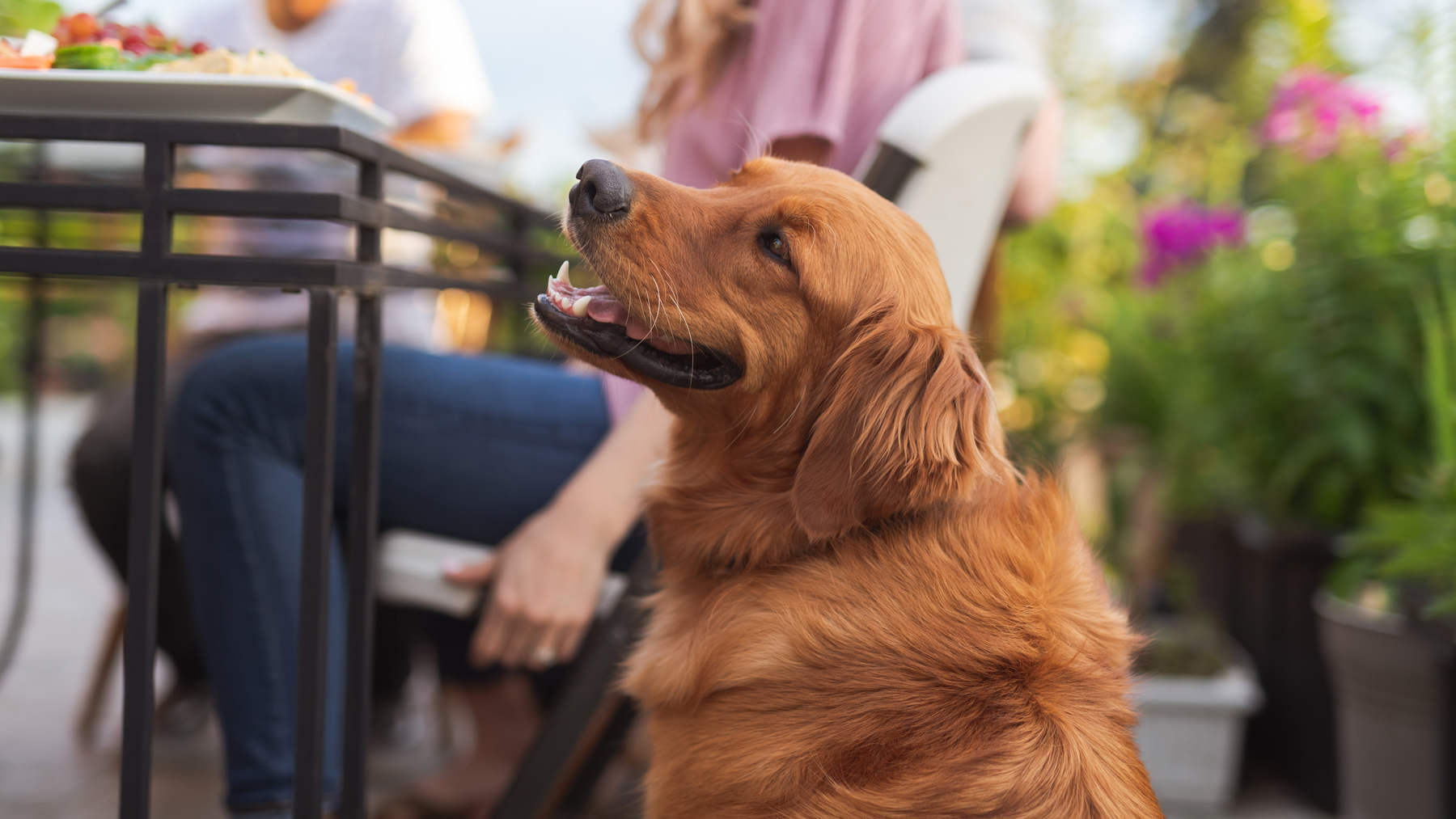Trainer demonstrates how to handle a reactive dog when visitors come over - it only takes four steps
Is your dog prone to snapping or getting worked up when guests come round? Try this dog trainer's preventative method

Training a reactive dog to remain calm when visitors are in your house is no easy feat. There is a lot to juggle when hosting people, the last thing you need is your dog getting stressed out and barking down the house.
Perhaps your canine has outgrown his or her best puppy toys and they get overly excitable or anxious when new humans are around. There are ways to manage this, just look at how this canine trainer from Tails of Connection dog training, taught her sister’s reactive dog to remain calm when guests come to visit.
Christie Catan said that her sister’s dog, Moose, typically gets worked up when he can’t see guests but he knows they are there. Catan devised a plan to slowly expose him to the guests using frameworks that he is familiar with and that would help him offer good behaviors.
In the video below, you can see the four steps method Catan uses on Moose to make the event of having visitors much calmer for your dog, the guests and yourself.
A post shared by Tails of Connection | Dog Training Community (@tailsofconnection)
A photo posted by on
If your dog is like Moose and they struggle with greetings, Catan outlines a simple method that she saw success come from with her sister’s pup.
1) Keep your visitors out of sight initially
The first step is to have your visitors stand in the backyard or a room where your dog can’t see them when they enter. In Catan’s video, she has the visitors stand outside in the backyard. Of course, depending on the weather and your available space, this might not be suitable. As long as you can keep them out of sight from your dog at first and you have space to gradually move closer to them then you can use Catan’s helpful method.
Get the best advice, tips and top tech for your beloved Pets
2) Stay close to your dog and occupy them with a game
Next, you are going to want to keep your dog’s attention by kneeling down and playing a game. Catan plays a tightened version of the up down game, one that the dog is very familiar with.
“I’m intentionally pulling his nose to the ground with a treat to prevent him from getting stuck on the visitors”. When you notice your dog relax, you can then stand up while continuing to help him disengage. “I continue to help him disengage when he needs it and look for him to start disengaging and offering me attention on his own,” Catan notes.
3) Start moving closer to the visitors
The third step involves bringing your dog closer to where your visitors are. “Once I start seeing him easily offer me attention, I move a little bit closer making sure to keep him engaged with me as we travel."
If your dog is consistently offering attention then continue to move closer, keeping your pooch engaged as you move. Once you are in full sight of your visitors you should hopefully notice that your dog isn’t focussing on them and instead looking to you. Aim to stop when you are around ten yards from the guests and continue to play the attention game with your pooch.
4) Allow your dog to sniff the guests before calling him/her away
Before revealing the final step, Catan said that her visitors were given clear instructions not to look at or touch Moose the dog.
“So when I walked Moose towards them, I looked for him to easily move away from them with me. Something I felt confident he’d do because of the behavior he was offering,” she explained, “Because of the body language I was seeing and with the consent of the visitors, I gave Moose an opportunity to sniff the visitors before calling him away. Once he met them, he carried on his life like they weren’t even there.”
If you try this and your reactive dog responds really well then this is great news. But don't be disheartened if it doesn't work with your dog first time. Training takes time and sometimes needs some extra 1:1 help with a behavior specialist.

Jessica holds a journalism degree from Cardiff University and has authored articles for renowned publications, including PetsRadar, Fit&Well, LiveScience, Runner's World, The Evening Express, and Tom's Guide. Throughout her career in journalism she has forged connections with experts in the field, like behaviorists, trainers, and vets. Through her writing, Jessica aims to empower pet owners with accurate information to enhance their furry companions' lives.
